
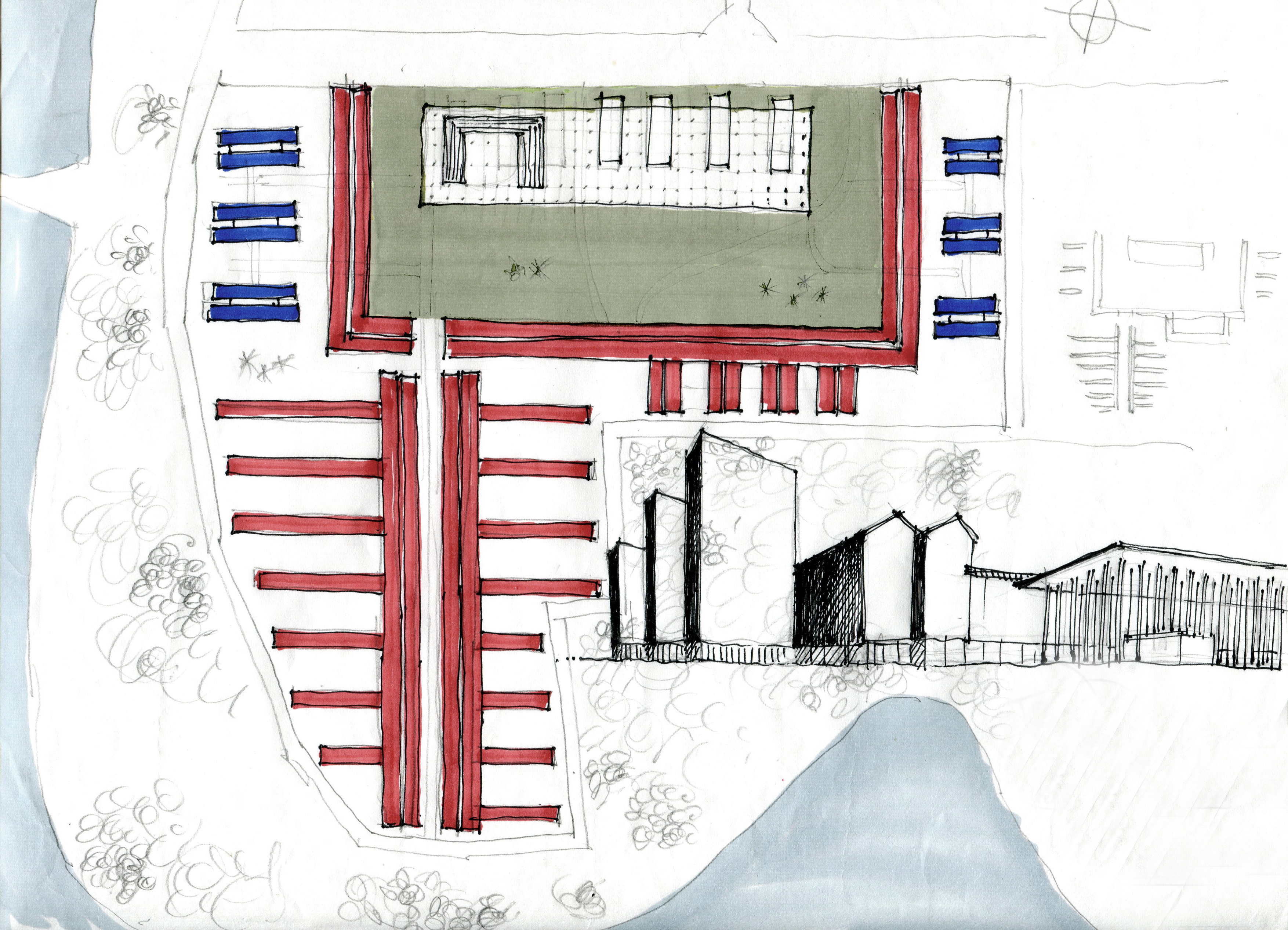
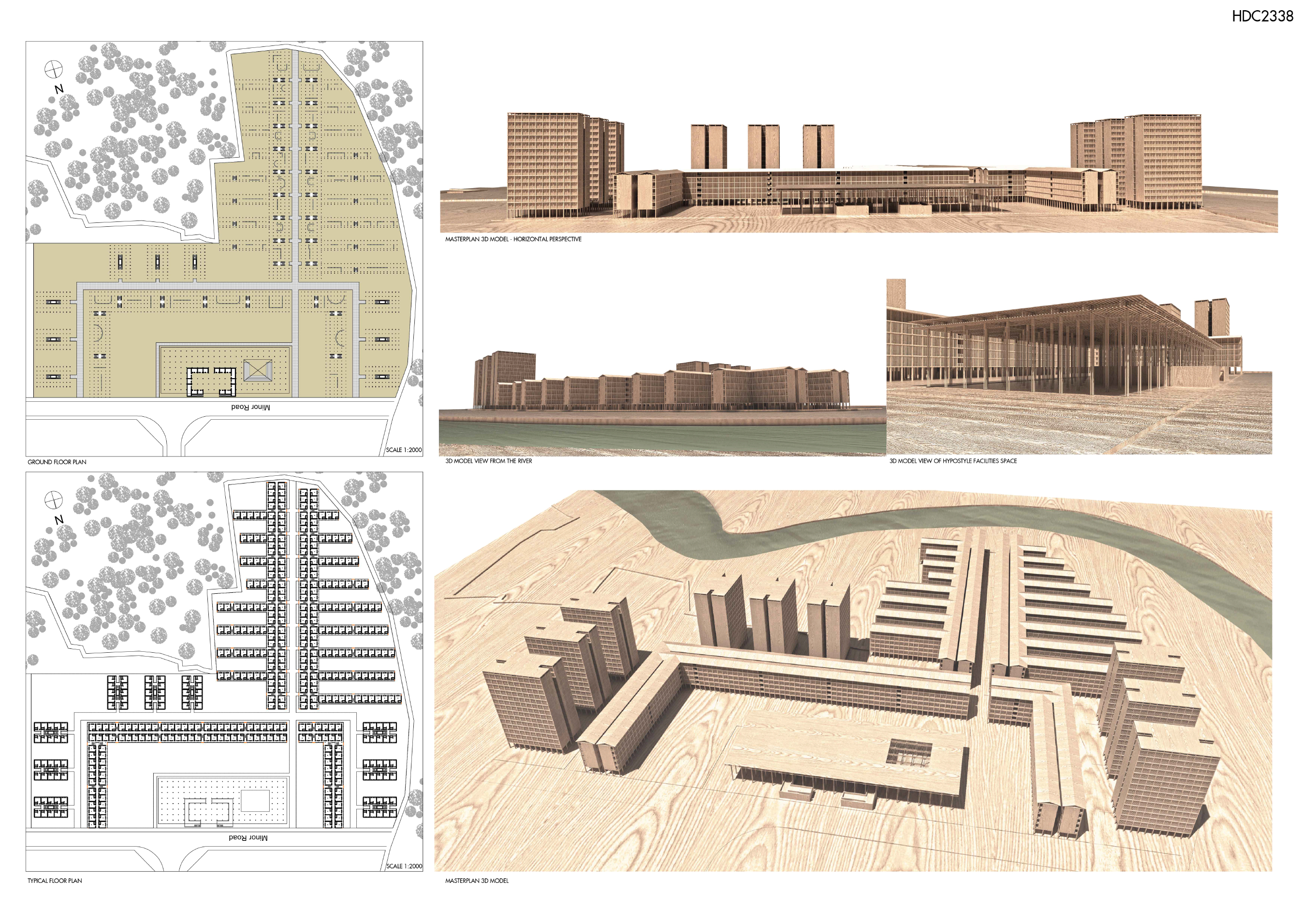
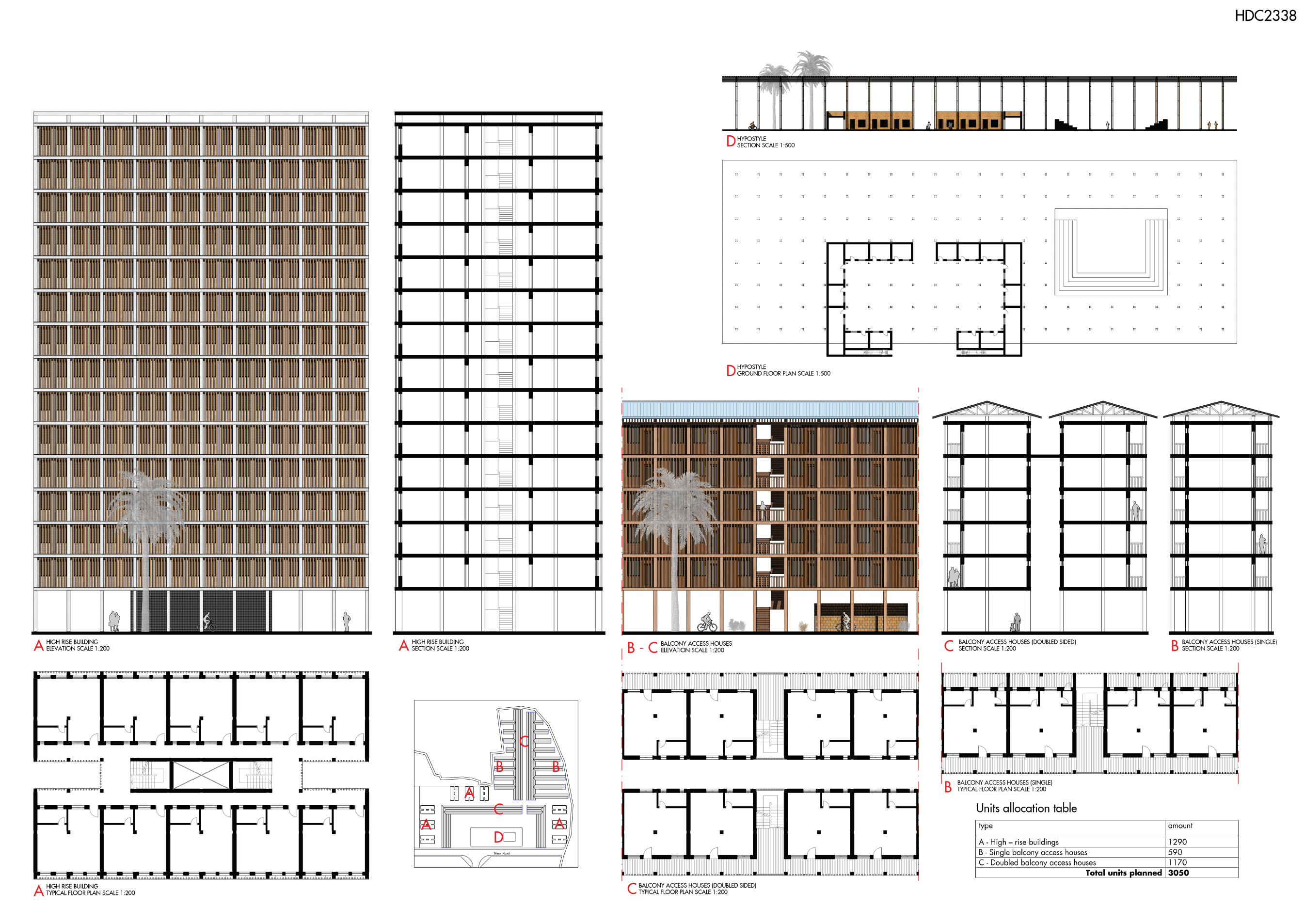
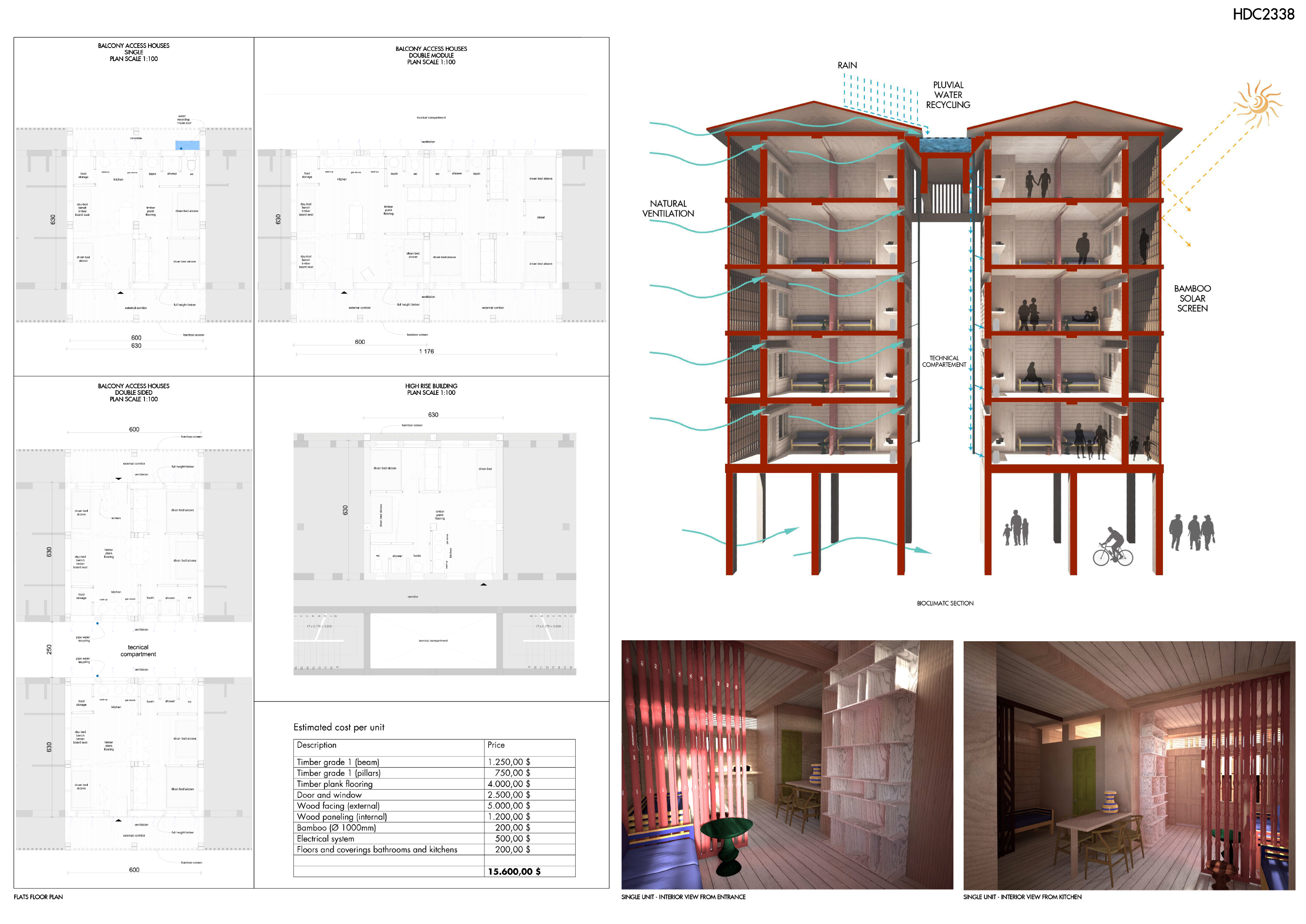

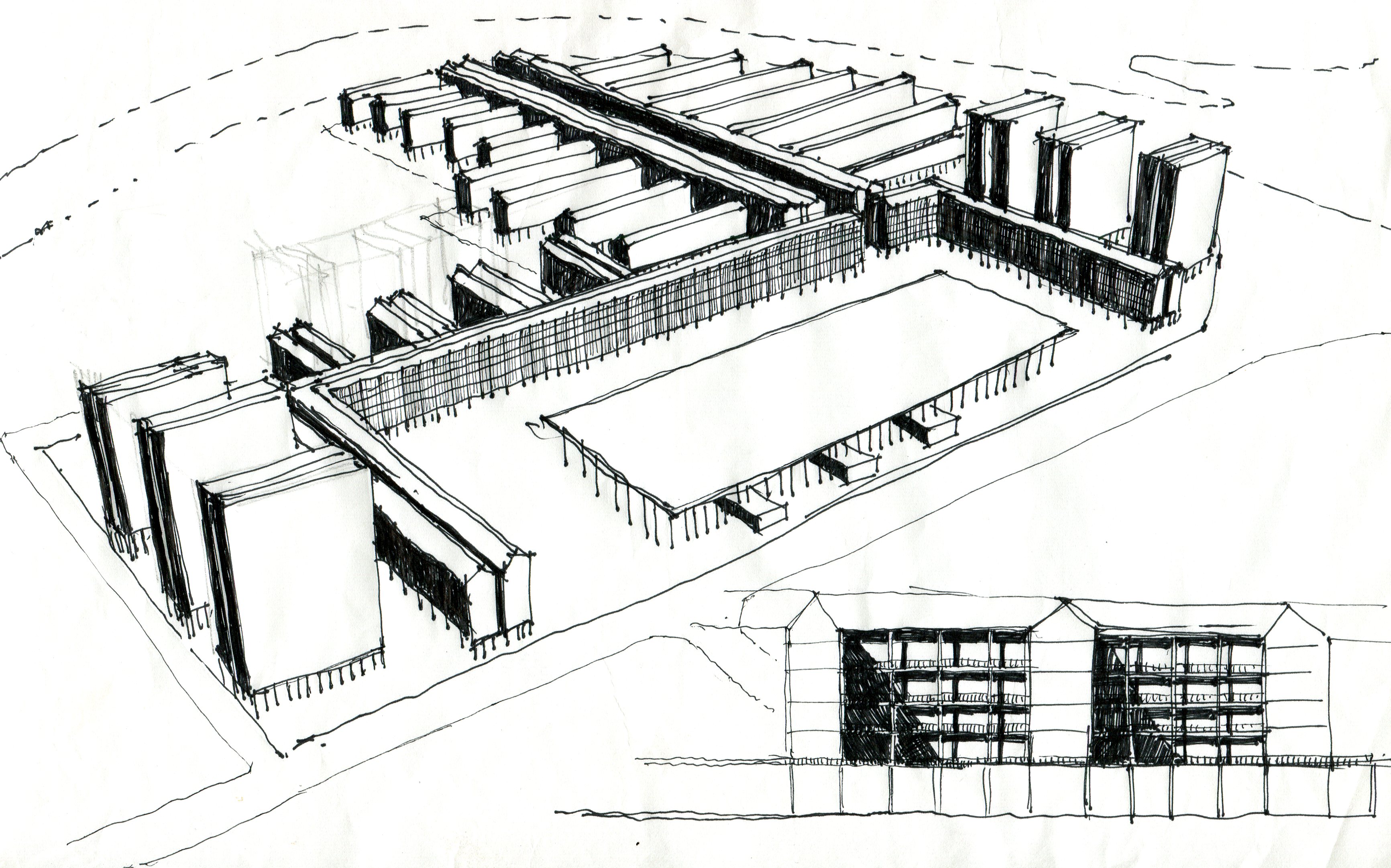

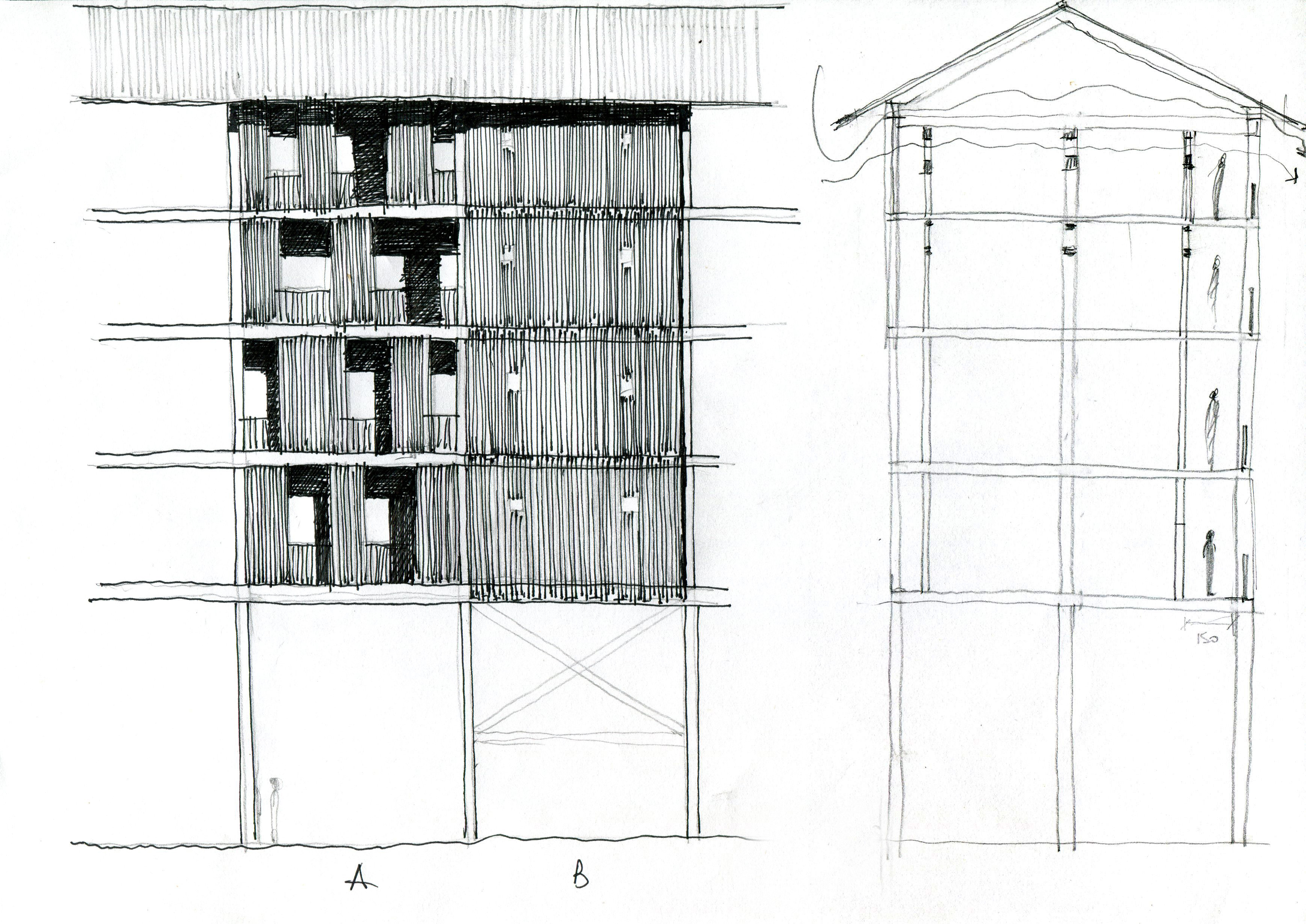
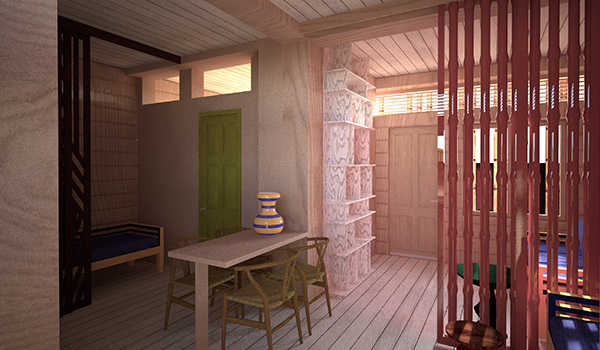
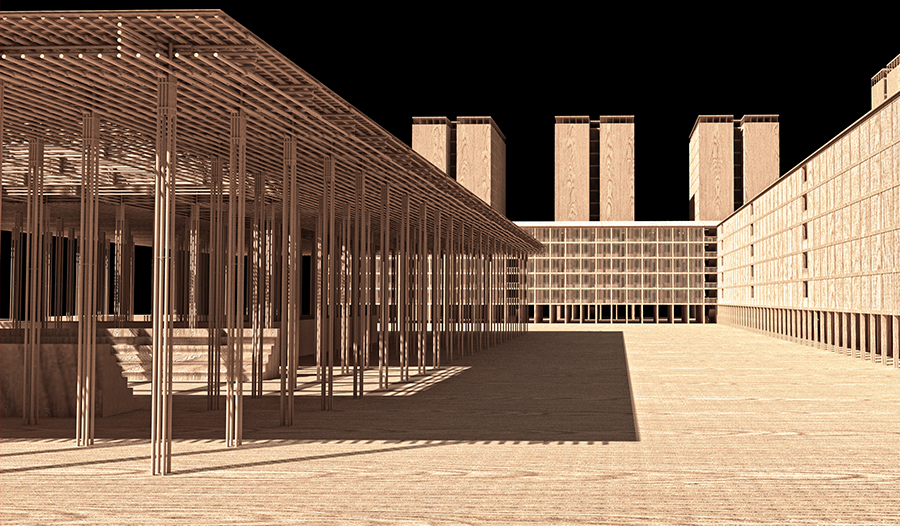
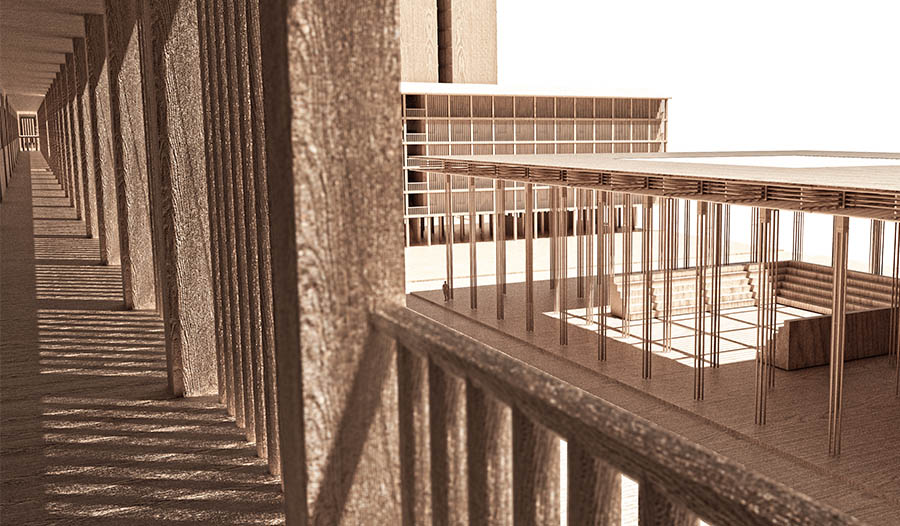
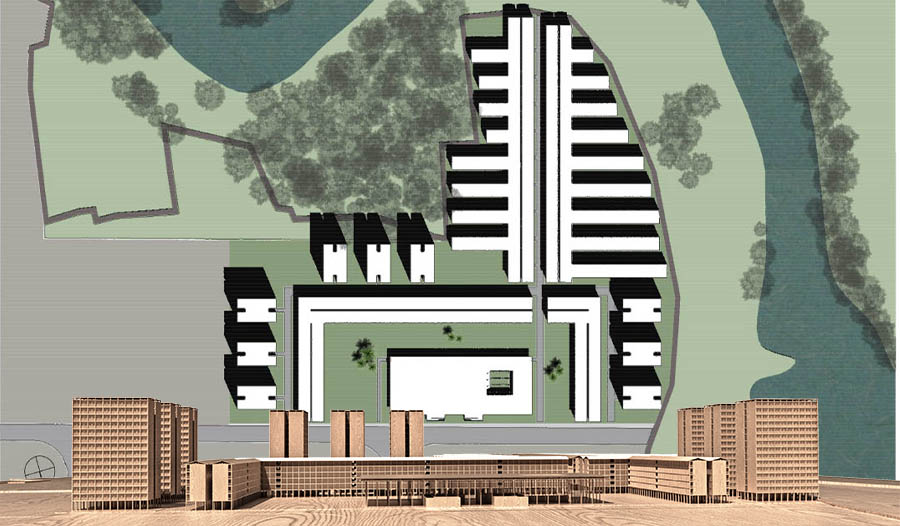
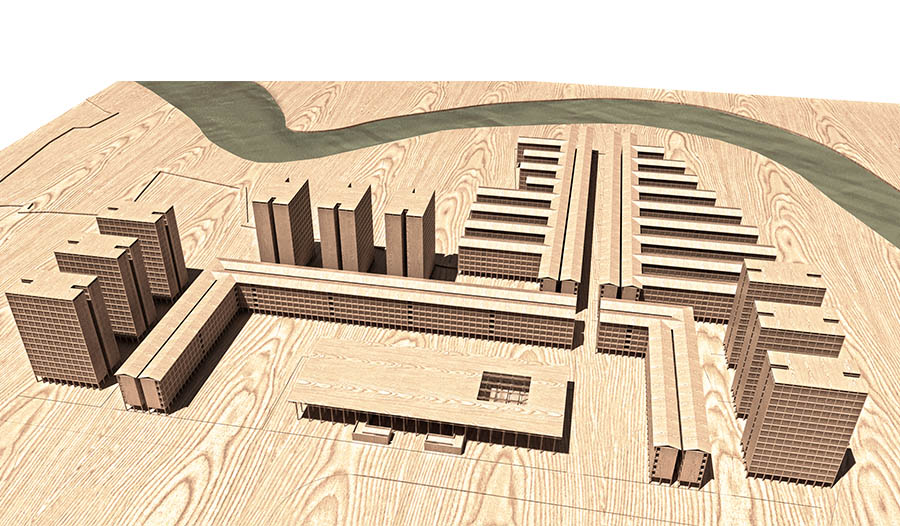
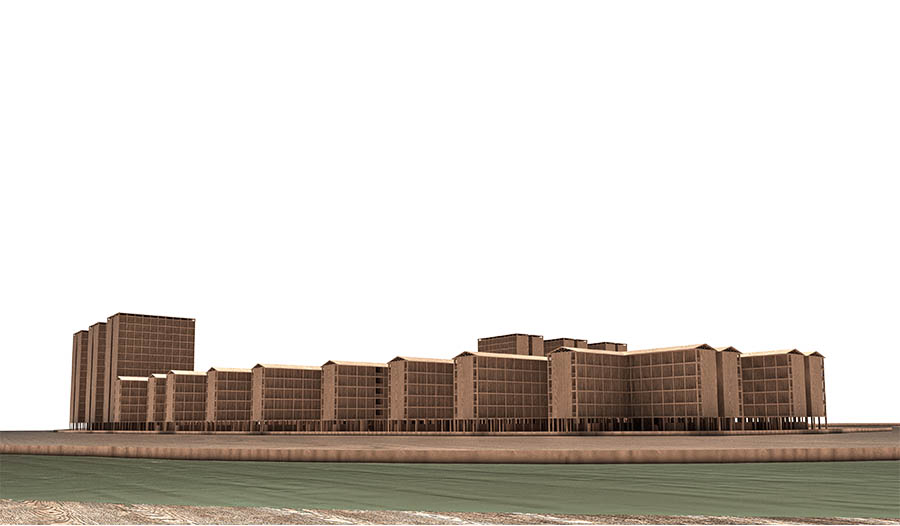
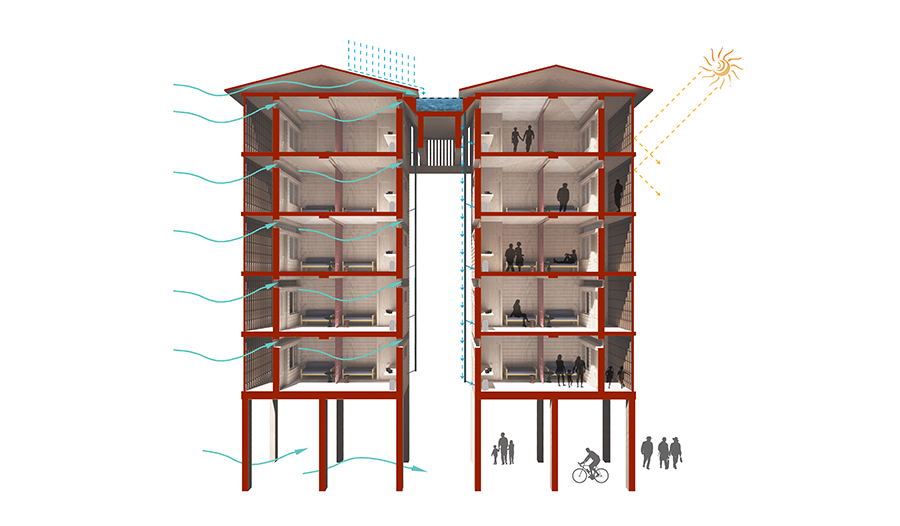
Affordable House Design Contest
Phnom Penh, Cambodia, Luglio 2018
The main topic of the project is a strong realism. It doesn’t look for special effects instead of a great improvement in Cambodian housing tradition. No invention is needed but only necessary transformation to build a high-density urban space identity. A part of the city built around a great place is the concept of entire design in this project. A foundation act which is not based on route plans but rather by the sense of proportion of future community representative space is made to create locus meaning identity. Architecture is the only way to generate locus, to differentiate between natural and cultural spaces. Architectural space is in relation to natural one and at once become divergent to represent the social coexistence of the human people. The founding area, as defined in project, become public space in order to calibrate a high-density social housing. The central space of the project is however not only thought as an unbuilt-open-area but also it is - and must be - a cultural and traditional space area. This process starts with architecture. For all these reasons residential housing concept starts from Cambodian traditional architecture: It recognizes in the form of contemporary design a cultural and geographical tradition without affecting neither past nor future. The complex provides for two-types residential housing: Balcony access houses and linear block houses. Mixed use types, strictly necessary in high density housing, has three compositional approaches:
1 - Great architectural public forum, opened on the side toward city, surrounded by a C-shaped plan of balcony access houses;
2 - A doubled-sided-block building with fish-bone blocks arrangements moving towards natural elements as forests and river.
3 - High-rise buildings around great public space in order to define visibility of the complex from long distance.
These three compositional approaches could be applied for the next urban development phases. All buildings are designed on pilotis, both to be aligned with traditional architecture and to release natural space thus enabling free movement of people on natural space. Architectural shape defines cities characters. The main function of architecture is to build cities images as it’s always been. Hypostyle public space The large public space with facilities is placed in the center of the area and has to qualify a relation among nearest areas of future developments. It’s appear as hypostyle space. It measuring 150x45 meters and designed in bamboo structure. It’s looks like a forest columns-made and it recognizes the image of Cambodian landscape with a large roof that covers the space below. The multifunctional area contains both public facilities and dedicate performing spaces to increase social life. Residences In Cambodian geographical area houses are built on stilts (pilotis) and have the traditional character of so called “long house”: It is a linear block house and its growth in plan is respond to family increasing. This compositional approach is used to define the configuration of housing unit and its aggregation system according to “long house” concept design. There are two-types plans: “Balcony access houses” and “linear block houses” plans. To reach a minimum of 3000 housing units the aggregation system provides multi-storeys buildings. The 5-storeys buildings are made in timber with iron strengthening. The roof is in pitches to recognize architectural and technical picks and in facts it helps to channel the rainwater to tanks and then to distribute to every unit by gravity. The 5-storeys buildings are single block or doubled sided block built up. For these ones there is a technical compartment to separate the blocks and it helps the natural ventilation and allow the hydraulics system. The unit access is placed on a “rue corridor” (external corridor) and its covered by a bamboo solar screen opened in several points to view out. The 14-Storeys buildings, in concrete-made, contains the same aggregation system of the 5-storeys houses. There are the same units plan and the structure has a double decking for ventilation and sun protection. It is the same rainwater recycling system and the channeling is placed in the central technical space. Single unit area is 36 square meters. It is 1 bathroom, 1 bedroom (with single or double bed), a kitchen and living room. In the doubled sided block utilities rooms are on the side of technical space which is a light-hole where in the single block is placed a service aerated space covered by bamboo sun shades. The single unit plan can be doubled for a larger family. The aggregation system of the units – adaptive to location form – generates new spaces as courtyards and streets to make possible a relationship between city and architecture. Similar to the city characters, residencies are built by using same elements: streets, squares, galleries, meeting points etc. . The masterplan has a researched elementary design concept which is most important than other issues such as construction process or material picks because it remains untouched by every technological proposal. The concept idea of urban design appears open to all possibilities of market’s bid. Routes generated by columns system are fully ordinated on natural ground and concerns the creation of hotspot for meetings. The idea surrounding design, according to Cambodian traditions, as a natural living space. A walls framework, in different geometrical forms and materials, intersect columns in order to generate a new landscape which is specialized to different uses, single and multiple needs and functions (pedestrian path, parking, etc…).